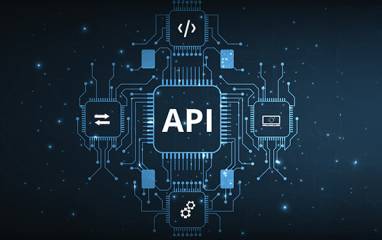Other recent blogs



Let's talk
Reach out, we'd love to hear from you!
Angular has long been one of the most powerful and enterprise-ready frameworks for building web applications. With Angular 20 (released in May 2025), Google has once again raised the bar. This release stabilizes core features that were experimental in earlier versions, introduces fresh tooling for developers, and takes huge strides in performance, reactivity, and developer experience.
If you’re coming from Angular 18 or 19, the jump to 20 is more than incremental it’s transformational. From stable signals to zoneless change detection, from incremental hydration to modern template syntax, Angular 20 is all about making apps faster, cleaner, and easier to develop and sustain.
Exploring Angular 20 New Features and Their Real-World Impact
Angular 20 new features introduce a major leap forward for developers. From reimagined reactivity with Signals to zoneless change detection, smarter SSR, and modernized templates, this release reshapes how applications are built and optimized. In this section, we’ll explore each feature in detail, share migration insights, and highlight how these updates influence real-world applications across industries.
1. Signals & Zoneless Change Detection Rethinking Reactivity
One of the most groundbreaking aspects of Angular 20 is the Signals API combined with the option to go zoneless.
Stable Signals API
In earlier versions, signals were introduced in developer preview. With Angular 20, they are now stable and ready for production use.
What are Signals?
Think of signals as reactive variables. When their value changes, Angular automatically reacts — without the need for manual ChangeDetectorRef calls or complex Observable subscriptions.
Example:
import { signal, effect } from '@angular/core';
@Component({
selector: 'counter',
template: `
<button (click)="increment()">Increment</button>
<p>Current Count: {{ count() }}</p>
`,
})
export class CounterComponent {
count = signal(0);
constructor() {
effect(() => console.log('Count changed:', this.count()));
}
increment() {
this.count.update(v => v + 1);
}
}
Here, count() is a signal, and effect() automatically runs when the value changes. No need for async pipes or manual subscriptions.
Why It Matters:
- Signals reduce boilerplate.
- They make apps faster because Angular knows exactly which parts of the DOM to update.
- They simplify debugging since dependencies are explicit.
Zoneless Change Detection (Developer Preview → Stable in v20.2)
For years, Angular has relied on Zone.js to patch async operations (like setTimeout, HTTP calls, etc.) and trigger change detection. While powerful, it sometimes caused performance bottlenecks and added extra complexity.
Now, Angular 20 introduces zoneless mode.
How it Works:
Instead of tracking every async call globally, Angular only re-renders when signals change.
This means no unnecessary re-checking of the entire component tree.
Enable zoneless mode at project creation:
ng new my-app --zoneless
Or migrate manually with:
bootstrapApplication(AppComponent, {
zoneless: true
});
Benefits:
- Better performance and smaller bundles (no Zone.js).
- Cleaner debugging (stack traces are less noisy).
- Greater developer control over reactivity.
Use Case Example:
Imagine a financial dashboard updating multiple widgets in real time. With Zones, the whole app might refresh unnecessarily. With Signals + Zoneless, only the updated widget re-renders saving CPU cycles.
2. Smarter SSR Incremental Hydration
Server-Side Rendering (SSR) plays a key role in faster load times and smoother first contentful paint. With Angular 20, SSR takes a leap forward through incremental hydration, making applications more responsive and efficient.
What is Incremental Hydration?
Traditionally, after SSR, Angular had to “hydrate” the entire page before enabling interactivity. On large pages, this resulted in significant delays..
Incremental hydration hydrates components on demand either when they become visible in the viewport or when the user interacts with them.
@Component({
selector: 'lazy-widget',
template: `
@defer (on viewport) {
<heavy-widget></heavy-widget>
}
`
})
export class AppComponent {}
Here, <heavy-widget> only hydrates when it comes into view.
Benefits:
- Faster Time to Interactive (TTI).
- Lower initial JavaScript payload.
- Better Core Web Vitals.
Real-World Example:
An e-commerce site with a long product list can load instantly, while product details and reviews hydrate only when the user scrolls.
3. Cleaner Templates Modern Control Flow & Expressions
See how new syntax like @if, @for, and inline expressions modernize Angular templates, making them cleaner, more flexible, and closer to native JavaScript.
a. Control Flow Blocks (@if, @for, @switch)
Before (Angular 19 and earlier):
<div *ngIf="items.length > 0; else noItems">
<ul>
<li *ngFor="let item of items">{{ item.name }}</li>
</ul>
</div>
<ng-template #noItems>No items available</ng-template>
Now (Angular 20):
@if (items.length > 0) {
<ul>
@for (item of items; track item.id) {
<li>{{ item.name }}</li>
}
</ul>
} @else {
<p>No items available</p>
}
Why It’s Better:
- Cleaner syntax, closer to native JavaScript.
- Easier to nest and maintain.
- Better type-checking during compilation.
b. Template Expressions Upgraded
Angular 20 allows JavaScript operators directly in templates:
- Exponentiation (**)
- in operator
- Template literals
Example:
<p>{{ base ** exponent }}</p>
<p>{{ 'name' in user }}</p>
<div class="col-{{ gridSize }}"></div>
Impact: Less code in the component class, more flexibility in templates
4. Debugging & Diagnostics Developer Confidence
Explore the new diagnostics, typed bindings, and error listeners that help catch mistakes early and improve app reliability.
a. Extended Diagnostics
Angular 20 now catches common mistakes early:
- Missing directive imports.
- Using a function instead of calling it in @for track expressions.
- Ambiguous precedence when mixing ?? and ||.
Example Warning:
Warning: Function used in @for track expression must be invoked.
b. Typed Host Bindings
Host bindings now undergo type checking. This prevents runtime errors like binding to a non-existent DOM property.
c. Global Error Listeners
You can now catch global errors (even outside Angular’s scope):
import { provideBrowserGlobalErrorListeners } from '@angular/core';
bootstrapApplication(AppComponent, {
providers: [provideBrowserGlobalErrorListeners()]
})
Perfect for production apps where silent failures could hurt UX.
5. Dynamic Components & DevTools Evolution
Understand the enhanced createComponent() API, advanced profiling tools, and DevTools updates that make building and debugging easier.
Enhanced createComponent() API
Dynamic component creation is now more powerful:
const cmpRef = createComponent(MyWidget, {
hostElement: document.body,
inputs: { title: signal('Live Data') },
outputs: { closed: () => console.log('Closed!') },
});
Supports:
- Input signals.
- Output event listeners.
- Directive application.
DevTools Enhancements
Angular DevTools now includes:
- OnPush labels for components.
- Deferred block visualization.
- Signal dependency trees.
enableProfiling()
Profiling API to monitor performance directly in DevTools:
import { enableProfiling } from '@angular/core';
enableProfiling();
6. Forms, HTTP, Router & Styling Updates
Dive into practical enhancements across forms, routing, HTTP, and animations—streamlining workflows and boosting developer productivity.
Forms
- resetForm({ emitEvent: false }) prevents redundant updates.
- markAllAsDirty() makes validation workflows more predictable.
Router
- Async redirectTo:
{ path: '', redirectTo: async () => shouldRedirect() ? '/home' : '/login' }
- Child resolvers can access parent route data — reducing duplication.
HTTP
- New httpResource() API ensures reactive, signal-based requests.
- keepalive support for HTTP requests (important during page unload).
Animations
- Lightweight CSS-based animations without importing the full @angular/animations package.
7. Extended Support & Angular’s Future
Get a glimpse into Angular’s roadmap, including full zoneless stability, deeper Signals integration, and faster SSR.
Angular’s roadmap after v20 includes:
- Full stability for Zoneless mode.
- Signal integration across forms, router, and HTTP.
- Signal debugging inside DevTools.
- Streamed SSR for even faster hydration.
Angular 19 vs Angular 20: Feature Comparison
With every release, Angular refines its framework for better performance and developer experience. While Angular 19 laid the groundwork with experimental features, Angular 20 stabilizes and extends them, making this upgrade one of the most impactful in recent years.
Below is a detailed side-by-side comparison of Angular 19 vs Angular 20 to highlight the key differences:
| Category | Angular 19 | Angular 20 | Why It Matters |
|---|---|---|---|
| Reactivity | Signals introduced in developer preview. | Signals API stable with signal(), effect(), toSignal(), linkedSignal(), etc. | Developers can confidently use signals in production for fine-grained reactivity. |
| Change Detection | Zone.js required for most apps. | Zoneless mode available (--zoneless flag). Stable in v20.2. | Improves performance, reduces bundle size, simplifies debugging. |
| SSR & Hydration | Basic SSR + full hydration only. | Incremental Hydration stable (hydrate on-demand, viewport, interaction). | Faster Time to Interactive (TTI), better Core Web Vitals, SEO boost. |
| Template Syntax | Relied on *ngIf, *ngFor, <ng-template>. | Modern control flow blocks: @if, @for, @switch. Supports template literals, ** operator, in operator. | Cleaner, JavaScript-like templates reduce boilerplate and errors. |
| Diagnostics | Limited compiler diagnostics. | Extended diagnostics: catches missing imports, uninvoked functions, ambiguous expressions. | Helps prevent runtime errors early in dev. |
| Host Bindings | Basic support, not type-checked. | Typed Host Bindings (typeCheckHostBindings) enforce type safety. | Reduces runtime crashes caused by invalid bindings. |
| Error Handling | Standard Angular error handling only. | Global Error Listeners with provideBrowserGlobalErrorListeners(). | Captures errors even outside Angular context, improving reliability. |
| Dynamic Components | createComponent() API available but limited. | Enhanced createComponent() with input signals, output listeners, directives, two-way binding support. | More flexibility for building dynamic UIs. |
| DevTools | Profiling basic, limited visualization. | New profiling API (enableProfiling()), signal trees, OnPush labels, deferred block visualization. | Makes debugging and performance optimization easier. |
| Forms | resetForm() resets but always triggers events. | resetForm({ emitEvent: false }), markAllAsDirty() improvements. | Fine-grained control over form state and validation. |
| Router | Static redirectTo, child resolvers limited. | Async redirectTo, child resolvers can access parent route data. | More powerful, dynamic routing scenarios. |
| HTTP Client | Basic HttpClient, rxResource() experimental. | Refined httpResource(), renamed params, keepalive support, redirect detection. | Modern, reactive-friendly API for data fetching. |
| Animations | Required @angular/animations import for most cases. | Lightweight CSS animation API for simple enter/leave animations. | Smaller bundles, less overhead for basic animations. |
| TypeScript Support | TypeScript 5.7/5.8 support. | Full TypeScript 5.9 support with better import ergonomics and hover tooltips. | Future-proof, cleaner developer experience. |
| Hot Module Replacement | Experimental template HMR. | Template HMR stable in v20.2. | Faster dev feedback loops with live template updates. |
| Roadmap | Signals still experimental, zoneless planned. | Signals stable, Zoneless stable in v20.2, deeper signal integrations planned (Forms, Router, HTTP). | Proves Angular’s long-term vision for reactive architecture. |
Quick Takeaways
- Angular 19 laid the foundation (Signals preview, template experiments, zoneless in preview).
- Angular 20 stabilizes those features, making them safe for production and delivering real performance and DX benefits.
- The biggest differences: Signals stability, zoneless change detection, incremental hydration, and modern template syntax.
Why Angular 20 New Features Is a Game-Changer
Angular 20 isn’t just an incremental update; it marks a fundamental shift in how developers will build applications with the framework going forward. Here’s why this release is a true game-changer for teams, enterprises, and individual developers alike.

1. Performance Gains at Scale
- Signals + Zoneless Mode completely reimagine change detection. Instead of scanning entire component trees, Angular now reacts only when and where data changes occur.
- This makes large, complex applications feel snappier and more responsive, even under heavy loads.
- For example, financial dashboards, IoT control panels, or healthcare monitoring apps — which update in real time — benefit massively because only the changed widget re-renders, not the whole app.
Impact: Teams can confidently build data-heavy, real-time applications without worrying about performance bottlenecks.
2. Cleaner and More Intuitive Development
Angular 20 introduces modern template syntax (@if, @for, template literals, and new operators) that feels closer to plain JavaScript.
Developers no longer need verbose *ngIf and <ng-template> constructs.
- The syntax is easier for newcomers to learn and for experienced devs to maintain.
- Less boilerplate means faster feature delivery and fewer bugs.
Impact: Lower learning curve, smoother onboarding for new developers, and reduced long-term maintenance costs for enterprises.
3. Server-Side Rendering That Competes with Next.js
With incremental hydration, Angular 20 apps now hydrate progressively rather than all at once.
- This drastically improves Time to Interactive (TTI) and Core Web Vitals.
- Angular is now in the same league as frameworks like Next.js (React) and Nuxt (Vue) in terms of SSR efficiency.
Impact: Businesses building search-optimized applications (such as e-commerce, media, and travel platforms) can now leverage Angular 20 new features to achieve stronger search visibility and deliver faster customer experiences — all without the need to migrate to another framework.
4. Stronger Developer Experience & Debugging
- Extended diagnostics help catch mistakes before they hit production.
- Typed host bindings add stronger guarantees and reduce runtime crashes.
- DevTools upgrades let developers visualize signals, OnPush strategies, and hydration behavior directly in the browser.
Impact: Development becomes more predictable, debugging becomes faster, and apps are less prone to subtle bugs that are hard to trace.
5. Enterprise-Ready Future
Enterprises stick with Angular because of its stability and longevity. Angular 20 doesn’t just add features — it lays a foundation for the next decade of development with:
- Zoneless mode becoming the default in the future.
- Signals being integrated into core modules like Forms, Router, and HTTP.
- A focus on smaller bundles, faster hydration, and scalable architectures.
Impact: Organizations can plan long-term roadmaps with confidence, knowing Angular is aligned with modern reactive paradigms while maintaining backward compatibility.
6. Closing the Gap with Modern Frameworks
React, Vue, and SolidJS often get attention for their reactivity and DX (developer experience). Angular 20 is catching up and even surpassing them in certain areas:
- Signals provide fine-grained reactivity similar to SolidJS.
- Incremental hydration rivals React’s partial hydration techniques.
- Type safety and first-class tooling remain uniquely strong in Angular.
Impact: Developers no longer have to consider “jumping ship” to another framework for performance or developer ergonomics — Angular now offers the best of both worlds.
7. Tangible Business Benefits
At the end of the day, frameworks aren’t just about developers — they’re about delivering business value. Angular 20 helps companies by:
- Reducing time-to-market with cleaner syntax and better tooling.
- Lowering infrastructure costs thanks to more efficient rendering and smaller bundles.
- Improving user retention and engagement with faster, smoother apps.
Impact: Businesses can build products that load faster, work better on all devices, and scale seamlessly — keeping them competitive in a digital-first economy.
Migration Tips
- Run: ng update @angular/core @angular/cli
- Replace *ngIf/*ngFor with @if/@for.
- Try zoneless mode in new projects.
- Refactor Observables to Signals gradually.
- Use DevTools to profile incremental hydration.
Challenges and Limitations of Angular 20 New Features
Angular 20 new features mark a fresh chapter for the framework, bringing in stronger reactivity, zoneless change detection, and more advanced SSR capabilities. These improvements unlock exciting possibilities for developers, but they also come with a set of real-world challenges. From adjusting to the Signals API to rethinking how apps handle hydration, the Angular 20 release requires teams to adapt. Let’s look at the most common hurdles and how you can tackle them with confidence.
1. Migration Complexity
Moving from older versions (especially Angular 14 and below) to Angular 20 isn’t always straightforward. The introduction of Signals, zoneless mode, and modern template syntax may require significant refactoring.
- Challenge: Existing apps may encounter breaking changes during the upgrade.
- Solution: Use Angular’s official migration schematics, upgrade version by version instead of skipping, and run automated tests after each migration step.
2. Learning Curve for Signals API
Signals change the way Angular handles reactivity, moving away from Zone.js-driven change detection. While this improves performance, developers must rethink how they manage state.
- Challenge: Teams familiar with observables and ChangeDetectionStrategy may struggle to adapt.
- Solution: Start with small POCs (proof-of-concept projects) to explore Signals. Encourage team workshops and training before adopting Signals at scale.
3. Zoneless Angular Adoption Risks
The zoneless approach removes Zone.js, improving performance and simplifying debugging. However, many third-party libraries still depend on Zone.js.
- Challenge: Compatibility issues with popular Angular libraries.
- Solution: Audit dependencies early. Check library roadmaps for Angular 20 compatibility before switching to zoneless mode in production.
4. Incremental Hydration Complexity
Incremental hydration allows Angular apps to load faster by hydrating parts of the UI only when needed. But misconfigured hydration strategies may result in UI flickers, broken states, or inconsistent user experiences.
- Challenge: Increased complexity in SSR debugging and hydration timing.
- Solution: Test hydration strategies (on-demand, by viewport, or by interaction) across multiple devices and network conditions. Use Angular DevTools for fine-tuning.
5. Template Syntax Transition
Angular 20 introduces modern control flow operators (@if, @for, @switch) to replace traditional directives like *ngIf and *ngFor.
- Challenge: Developers familiar with old syntax may find the transition disruptive. Large codebases may need heavy refactoring.
- Solution: Adopt the new syntax gradually. Mix old and new patterns during transition periods to reduce developer friction.
6. Tooling & Ecosystem Catch-up
Not all third-party tools and libraries are ready for Angular 20. This includes state management solutions, UI libraries, and SSR utilities.
Challenge: Compatibility gaps may delay adoption for enterprise-grade applications.
Solution: Stick to well-maintained libraries with active communities. Monitor GitHub issues and changelogs to avoid surprises.
7. Performance Trade-offs
While Angular 20 dramatically improves performance, poor implementation of Signals or hydration strategies can backfire. For example, overusing Signals without understanding dependency tracking may still trigger unnecessary updates.
- Challenge: Developers may misuse new APIs, leading to hidden performance bottlenecks.
- Solution: Profile applications regularly with Angular DevTools. Follow Angular’s official performance guidelines and adopt Signals only where truly beneficial.
By understanding these challenges, teams can plan smoother migrations and avoid costly pitfalls. Angular 20 is a leap forward, but success depends on careful adoption, testing, and developer training.
Common Questions on Angular 20 Release and Features
Find quick answers to the most common questions about the Angular 20 release, including migration, performance, and developer experience.
1. What is Angular 20?
Angular 20 is the latest version of Google’s TypeScript-based web development framework. It focuses on performance, developer experience, and modern reactivity with stable Signals API, zoneless change detection, incremental hydration, and modernized template syntax.
2. What are the biggest new features in Angular 20?
Angular 20 introduces stable signals, zoneless change detection, incremental hydration for SSR, and modern JavaScript-like template syntax.
3. How do I migrate from Angular 19 to Angular 20?
Run ng update @angular/core @angular/cli, refactor your templates to use @if/@for blocks, and gradually switch from Observables to Signals.
4. Is Angular 20 safe for enterprise use?
Yes, most features are now production-ready, and the roadmap promises continued support and improved integration across Signals, Forms, and SSR.
5. How should I migrate to Angular 20?
Use the CLI for updates, refactor templates to the new control flow, adopt Signals for reactive state, and leverage SSR for better SEO.
6. How does Angular 20 improve server-side rendering (SSR)?
Angular 20 introduces Incremental Hydration, allowing apps to hydrate components on-demand, by viewport, or based on user interaction. This reduces Time to Interactive (TTI) and improves Core Web Vitals, making Angular apps faster and more SEO-friendly.
7. Should I upgrade to Angular 20 from Angular 19?
Yes. If your project is on Angular 19, upgrading to Angular 20 ensures access to stable reactivity, better performance, and improved developer tools. Most experimental features in Angular 19 are now stable in Angular 20, making it a safer and more future-proof choice.
8. Does Angular 20 support the latest TypeScript?
Yes. Angular 20 is fully compatible with TypeScript 5.9, which includes improved import ergonomics, better hover tooltips, and enhanced developer experience.
Final Thoughts
Angular 20 new features aren’t just incremental updates — they represent a redefinition of the framework’s future. With cleaner syntax, developer-first APIs, and blazing-fast reactivity, Angular 20 makes modern web development more efficient than ever. Whether you’re building enterprise dashboards, e-commerce platforms, or progressive web apps, these new features equip developers to create applications that are faster, smarter, and easier to maintain.
If you’ve been waiting for the “right time” to adopt Angular or upgrade from an older version — Angular 20 is that moment.



